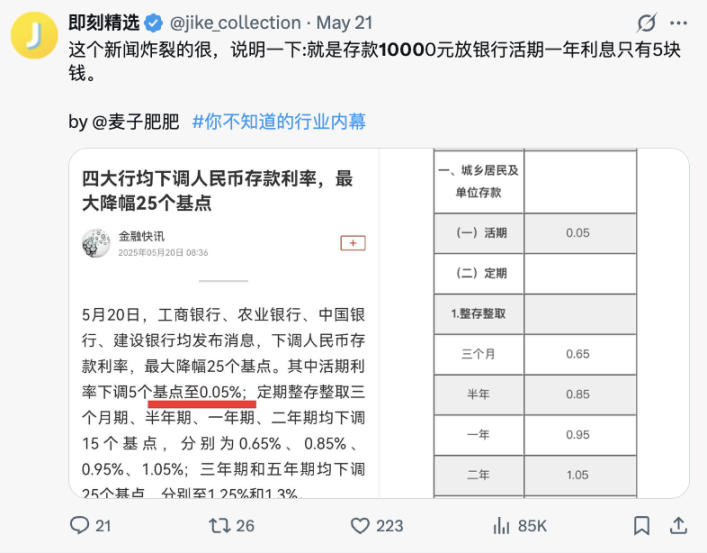撰文:0xresearcher
最近,一个看似简单的问题在加密圈热度讨论:「如果我有 1000 万,应该投到哪里去?还能实现 10% 年化收益吗?」
乍一听像是中产焦虑的延续,但这背后,其实是加密市场的真实写照——激励红利逐渐退潮,稳定收益愈发稀缺,资本开始重新审视「收益结构」本身。
在传统金融里,10% 的年化意味着什么? 要么是信用下沉,要么是杠杆加持,要么是流动性极差。而 Web3 曾经给予的高收益,更多来自激励驱动的泡沫红利,而非底层结构带来的效率变革。

随着「撸毛经济」退场,DeFi 蓝筹收益回落、链上交易量持续走低、资金效率逐渐成为主旋律——如今的市场,真正焦虑的问题是:
「在没有补贴、没有牛市的当下,Web3 是否还能给稳健型资金一份可持续的收益答案?」
本文尝试通过几个关键项目,解构这个问题的可能解法。
DeFi 红利退潮,资金开始转向「真实使用 + 结构优化」
当下,大多数用户已经意识到:单靠空投已经无法长久,链上流动性的结构性问题愈发突出。
一方面,激励模式难以为继;另一方面,DeFi 协议之间的流动性竞争卷向极致,但基础设施本身并没有质的飞跃。大部分 Rollup 仍在复刻以太坊旧模型,链上撮合性能远无法满足真实交易需求。
在这种背景下,资金开始重新寻找新的收益结构,核心不再是「投机资产」,而是「投结构」——投向那些能够产生真实链上现金流、提升交易效率的系统「。
两个方向开始被市场关注:
-
面向专业交易者、重构撮合系统的链上交易基础设施
-
面向开发者、提供标准化交易模块的可组合式服务层
Hyperliquid:为专业交易者设计的链上撮合系统
Hyperliquid 是一个运行在自研 L1 链上的全链 perp 协议。这个项目目前没有代币,没有激励,但其交易深度已连续数月进入全网前三。
这并非偶然。Hyperliquid 重新定义了链上 perpetuals 的性能标准,用」中心化体验 + 链上结算「设计,打造出了一个更接近专业交易者使用习惯的系统。其自研 L1 链支持亚秒级撮合,同时实现了低滑点和低 gas 成本,足以支撑大体量资金的频繁交易。
更重要的是,Hyperliquid 并不把自己定位为」空投平台「或」散户入口「,而是一个面向高频交易者的结构性产品。在这个系统中,收益来自真实交易深度,而非激励堆叠。
对」1000 万「这类资金而言,这正是新的链上资金策略:不追求一次性短期收益,而是寻找真实使用者聚集、资金效率高、具备长期深度的交易基础设施。
Orderly:从链上撮合到交易模块标准化
相较于 Hyperliquid 的垂直整合,Orderly Network 提供的是一种」模块化交易基础设施「。它不做前端、不引导用户,而是为开发者提供一套可组合、可插拔的交易系统。
简单来说,Orderly 想成为 Web3 交易领域的」亚马逊云「,不参与零售,只做开发工具与基础组件。
Orderly 的结构分为四个核心模块:
1. 撮合引擎
链上撮合的性能瓶颈一直是高频策略的障碍。Orderly 采用链下撮合、链上结算的方式,兼顾效率与透明度,支持更复杂的交易指令和更高的资金使用率。
2. 资金池系统
与 AMM 不同,Orderly 引入更接近传统交易所的资金池模型,允许做市商按需注入流动性,同时确保订单簿稳定深度。这也为后续多策略做市提供了基础。
3. 清结算系统
资金结算基于 Layer1,用户资产隔离管理,不会因前端项目或中间层出现系统性风险,提升了资金安全性。
4. 风控系统
Orderly 将链下风控模块化,便于开发者快速集成,降低项目搭建门槛。
这套模块化方案的最大意义在于:开发者可以像搭乐高一样,快速搭建属于自己的交易产品,无需从零构建撮合、清算、风控等复杂系统。
高性能链上的真实落地
Orderly 近期在 Solana 上的应用,提供了一个非常典型的案例。
Solana 虽然在基础设施性能上远超以太坊,但直到最近才出现一套能与其性能匹配的」Order Book Infra「。Orderly 在 Solana 上的集成实现了:
-
撮合引擎链下运行,兼顾速度与用户掌控感
-
每秒处理上千订单请求,满足机器人和专业交易者需求
-
结算回链,确保交易可验证性
这不仅大幅降低了用户的真实交易成本,更关键的是,它将 Solana 的高性能真正转化为用户的资金效率。
Orderly 也因此成为目前少数几个同时支持以太坊系与 Solana 的撮合协议之一,具备极强的跨链兼容性。
把真实收益能力开放给普通用
对于大部分无法高频交易或自行开发策略的用户来说,结构性的撮合收益也不再遥不可及。OmniVault 正是这一趋势的典型代表。
作为由 Kronos 打造的一站式收益平台,OmniVault 让用户只需存入 USDC,资金便可自动参与 Orderly 网络上的做市行为,在多个链上市场中运行 Kronos 策略,从而获得真实、可验证的 LP 收益。不同于」模拟撮合「或」内循环交易「的收益来源,OmniVault 所捕捉的收益来自链上撮合订单的真实交易行为,具有更强的可持续性和抗周期性。
近期,Binance Wallet 正式支持 OmniVault 接入。这一全球交易量最大的 Web3 钱包(占据 2025 年市场交易量的 95% 以上)所带来的,不仅是亿级用户入口的打开,更是数十亿美金流动性可能性的释放。OmniVault 当前 TVL 已接近 700 万美金,年化收益率稳定提升至 30%,成为少数几个将」真实做市收益「转化为」用户被动收益「的通用入口。
从激励红利到结构红利,链上收益新范式已现雏形
无论是为专业交易者设计的 Hyperliquid,还是为开发者提供模块化基础设施的 Orderly,再到为用户开放真实收益能力的 OmniVault,它们共同展现了一个趋势:
链上」稳健高收益「的新范式,不再依赖补贴与投机,而是依赖真实交易需求与资金效率结构。
过去几年,Web3 资本在空投、做市、Restaking 等叙事中轮动,但真正具有穿越周期能力的系统,一定建立在真实使用场景 + 结构优化能力之上。
1000 万获得 10% 年化收益,仍然可能——但前提是你投对结构,而不是投对热点。
免责声明:本文章仅代表作者个人观点,不代表本平台的立场和观点。本文章仅供信息分享,不构成对任何人的任何投资建议。用户与作者之间的任何争议,与本平台无关。如网页中刊载的文章或图片涉及侵权,请提供相关的权利证明和身份证明发送邮件到support@aicoin.com,本平台相关工作人员将会进行核查。




